
by fljustice | Feb 12, 2018 | Biographies, Books, History, Reviews
Book Review: Narrative of the Life of Frederick Douglass, an American Slave and Other Writings
Blurb:
“This dramatic autobiography of the early life of an American slave was first published in 1845, when its young author had just achieved his freedom. Douglass’ eloquence gives a clear indication of the powerful principles that led him to become the first great African-American leader in the United States.”
Welcome to Black History Month!
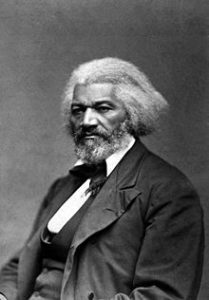
Frederick Douglass c 1874
I always look forward to February and March because it puts the spotlight on two marginalized groups in history. As a history geek, I would prefer that we didn’t need those spotlights, but given the current political backlash against all “others,” I don’t think we’ll be reaching that point soon. So one of my contributions this year is a review of the venerable autobiography of Frederick Douglass, an escaped american slave, abolitionist, preacher and revered leader of the African American community. As a scholar of ancient history, I value primary sources (which are few in my chosen time of 5C Rome). This autobiography is a precious record of a troubling period in our American History from a man who experienced it first hand. This is a classic of American literature and a rebuke to all folks who insist that the Civil War was fought over “heritage.” (more…)
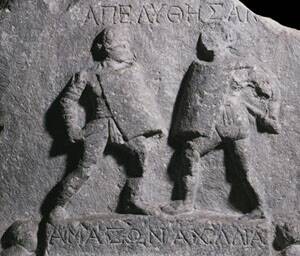
by fljustice | Aug 18, 2015 | Blog tour, Books, Essays/Research, Gladiators, Gladiatrix, History
Women Gladiators? Really?
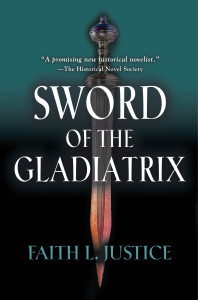 Yes, really! Whenever I pitched Sword of the Gladiatrix as my “lesbian gladiator novel,” I encountered raised eyebrows and skeptical snorts. The first question everyone asked: “Were there really lesbian gladiators?” My answer: “Of course!” We know there were female gladiators fighting in arenas for several centuries. Some had to be lesbian or tribades as the Romans would call them.
Yes, really! Whenever I pitched Sword of the Gladiatrix as my “lesbian gladiator novel,” I encountered raised eyebrows and skeptical snorts. The first question everyone asked: “Were there really lesbian gladiators?” My answer: “Of course!” We know there were female gladiators fighting in arenas for several centuries. Some had to be lesbian or tribades as the Romans would call them.
What really surprised people was the fact of female gladiators. They rarely appear in popular culture. Despite the popularity of Xena Warrior Princess and the myths of the Amazons, female gladiators don’t come to mind in the media-soaked imaginings of brutal, bloody, gladiatorial games. Women warriors? Maybe. Women gladiators? No. Yet they are there in grave markers, classical literature, laws, and art. All you have to do is look. (more…)

by fljustice | Apr 2, 2015 | Biographies, Books, History, Reviews, Wonderful Women
Boudica, Queen of the Iceni:
Two books
 We authors—especially of historical fiction—cannot get along without our research books. (We also like to visit the places we write about, explore museum exhibits, and participate in archaeology and reenactments, but this post will talk about research of the armchair variety.) We prefer primary sources: journals, diaries, letters, histories, account lists, and literature written in the period, describing the people and events we want to write about; but that’s not always possible. For cultures that didn’t have a written language (the Iron Age Celts), or it was indecipherable (Egyptian hieroglyphs until the discovery of the Rosetta stone), or it was destroyed (Mayan books burned by conquering Spaniards); we have to rely on secondary sources. Books, essays, and articles by academics and other professionals in their fields are the best we can do for written research in such cases. But we have to be careful even with those. Just as in evaluating primary sources we have to keep in mind the biases and knowledge of the writer, we have to do the same with secondary sources. Let’s face it, there’s a lot of dreck out there—particularly on the internet—and historical fiction authors usually like to get as close to the truth as possible.
We authors—especially of historical fiction—cannot get along without our research books. (We also like to visit the places we write about, explore museum exhibits, and participate in archaeology and reenactments, but this post will talk about research of the armchair variety.) We prefer primary sources: journals, diaries, letters, histories, account lists, and literature written in the period, describing the people and events we want to write about; but that’s not always possible. For cultures that didn’t have a written language (the Iron Age Celts), or it was indecipherable (Egyptian hieroglyphs until the discovery of the Rosetta stone), or it was destroyed (Mayan books burned by conquering Spaniards); we have to rely on secondary sources. Books, essays, and articles by academics and other professionals in their fields are the best we can do for written research in such cases. But we have to be careful even with those. Just as in evaluating primary sources we have to keep in mind the biases and knowledge of the writer, we have to do the same with secondary sources. Let’s face it, there’s a lot of dreck out there—particularly on the internet—and historical fiction authors usually like to get as close to the truth as possible.
In researching Sword of the Gladiatix, I collected several books, articles, and pamphlets on Boudica and Roman Britain, most of an academic nature, a few of the more “popular” variety. The two biographies of Boudica I review below are the best by far of both types. You can read either or both and get a well-researched, readable history of the Iceni Queen, her times, and her legacy in popular culture. Which to read depends on your needs and nature. (more…)
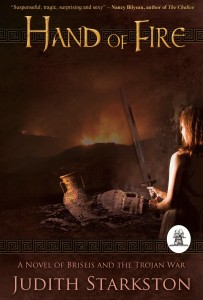
by fljustice | Sep 19, 2014 | Books, Fiction, Free stuff, Reviews, Wonderful Women
Book Review and Giveaway:
“Hand of Fire” by Judith Starkston
I get pitched a lot of books. I usually accept about one a month. I like most of them and write a paragraph or two on GoodReads.com, LibraryThing.com or Amazon.com. A very few get the full blog treatment. Hand of Fire by Judith Starkston is one of those I want to enthusiastically share with my fellow readers. Her novel has all the elements I look for in historical fiction: compelling characters, engaging plot, and fascinating setting.
About the book:
 The Trojan War threatens Troy’s allies and the Greek supply raids spread. A young healing priestess, designated as future queen, must defend her city against both divine anger and invading Greeks. She finds strength in visions of a handsome warrior god; will that be enough when the half-immortal Achilles attacks? Hand of Fire, a tale of resilience and hope, blends history and legend in the untold story of Achilles’s famous captive, Briseis.
The Trojan War threatens Troy’s allies and the Greek supply raids spread. A young healing priestess, designated as future queen, must defend her city against both divine anger and invading Greeks. She finds strength in visions of a handsome warrior god; will that be enough when the half-immortal Achilles attacks? Hand of Fire, a tale of resilience and hope, blends history and legend in the untold story of Achilles’s famous captive, Briseis.
My review:
I have a weakness for stories that shine a light on little known women or give silenced women a voice in the way Anita Diamant spoke for the biblical Dina (Joseph’s only sister) in her wildly popular The Red Tent. Starkston takes a similar approach through the story of Briseis. In the Iliad Briseis has only a handful of lines, yet she is a pivotal character in the narrative arc of the classic poem, sparking a rift between Achilles and Agamemnon that almost brings the Greek war against Troy to ruin. In the poem she expresses her love for Achilles in spite of the fact that he killed her brothers and husband, sacked her city, and reduced her status from princess to slave. A tall order to build a believable scenario where that could happen! Starkston does a beautiful job taking the slender clues about Briseis’ life and times and building believable characters. Briseis matures from an uncertain girl to a woman capable of determining her own destiny in this engaging story. (more…)
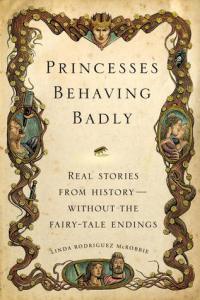
by fljustice | Nov 22, 2013 | Biographies, Books, History, Reviews, Wonderful Women
Princesses Behaving Badly: Real Stories from History without the Fairy-Tale Endings
by Linda Rodriquez McRobbie
“Once upon a time, there lived a beautiful princess who wasn’t afraid to cheat, deceive, seduce or murder anyone who got in her way.”
 I like these kinds of books—collections of short bios of (mostly) unknown women who are remarkable for doing daring/unusual things down through history. I have one on women at sea; several on women warriors; others on women explorers, mathematicians, and scientists. They generally follow a pattern of one to two page biographies written in a breezy, modern style emphasizing the outrageousness (for her time) of the woman’s actions.
I like these kinds of books—collections of short bios of (mostly) unknown women who are remarkable for doing daring/unusual things down through history. I have one on women at sea; several on women warriors; others on women explorers, mathematicians, and scientists. They generally follow a pattern of one to two page biographies written in a breezy, modern style emphasizing the outrageousness (for her time) of the woman’s actions.
Why do I like these kinds of books? To be honest, they’re snack food—light fluffy reads that give me a break from heavy turgid research books. They also remind me that—despite what the history books tell us—some women in every era, somewhere in the world, were doing remarkable things. The majority (like today) lived ordinary lives, but a few women always stood out and lived extraordinary ones. I like learning about them and being inspired to tell their stories. This kind of book is a good starting point for any historical novelist looking for inspiration.
(more…)
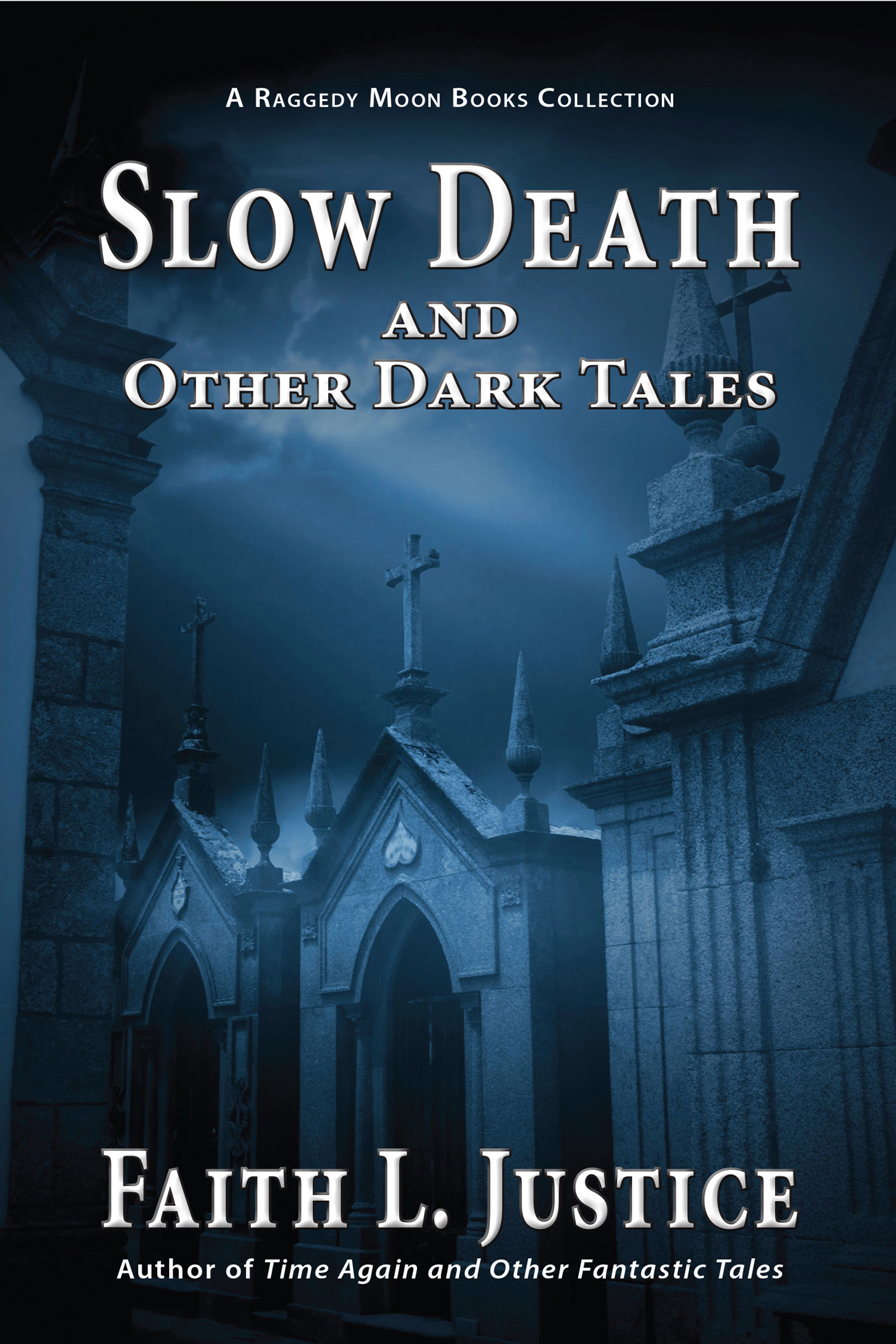
by fljustice | Oct 31, 2013 | Fiction, Free stuff, Writing

Reconstruction of the “Lindow Man” bog body. Courtesy of Wikipedia.
Samhain
Samhain–the night of the dead. Yevetha knew from the ice around her heart there was one more ghost to walk the night and haunt her dreams. She clutched a tiny fur blanket to her sunken chest and rocked back and forth, keening. Sixteen summers ago she had ripped a bloody baby from the womb of her dying daughter and had wrapped him in the fur.
Yevetha had searched in the bogs for the rare herbs that would bring on her milk and had endured the pain caused to an aging body as it prepared to nurse the tiny infant. Her love had been rewarded as Bohumil grew into a fine strong young man with his mother’s blue eyes.
At the waning of the last full moon, Bohumil had come of an age to marry. He had packed for the hand of days it would take him to travel to the ocean tribes and set out through the forest to trade for a bride price. The full moon returned. Bohumil did not.
Yevetha pulled her worn skin cloak tighter about her shoulders and turned to the fire pit at the back of the hut. The cramped space reeked of peat smoke and the herbs drying in the thatch ceiling. She pushed at a tangle of coarse gray hair, leaving a smudge of soot across one cheek.
Yevetha had seen forty-six winters. She was weary and there was no one to replace her as healer now that the Sun priests had outlawed the worship of the Great Mother and all Her arts. She spat on the fire. For twenty years the Sun priests had cursed her life. They had converted the village men to their Sun worship and fewer and fewer women met in the secret glade to keep the covenant with the Mother Goddess.
Yevetha pulled a bronze knife from her belt and stretched to cut several herbs from the store in the ceiling. Bitter rue for grief, sweet rosemary for remembrance, and rough hemp for dreams. She took a figure made of twigs from a plain reed basket and tied the tear-stained fur around its waist with a twist of straw. (more…)









